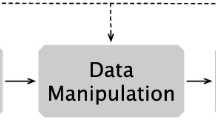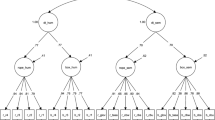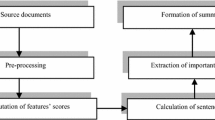Abstract
Word cloud is a common text visualization technique. With the ability of presenting the keywords of a document in a direct way, it has been widely applied in many real-world situations. However, to better represent the main idea of a document, a critical aspect for word cloud design is to set an appropriate font size to facilitate semantic expression. In this paper, we explore the influence of font scale on semantic expression and evaluate font size of word cloud in a more systematic approach. To quantify semantic information of a document, we utilize an LDA ensemble-based method to support interactive selection of topics and obtain the semantics of documents in a scientific way. We conducted two pilot studies to decide important attributes of word clouds for the formal study. Through formal study 1, we find that the scale affects the semantic expression of word cloud, including accuracy, time and confidence in making judgments. In study 2, we explored different semantic expression patterns of word clouds under different document categories. Our findings aimed at optimizing the scale of word cloud and improving its semantic expressing ability.
Graphic abstract











Similar content being viewed by others
References
Alexander E, Chang CC, Shimabukuro M, Franconeri S, Collins C, Gleicher M (2018) Perceptual biases in font size as a data encoding. IEEE Trans Visualization Comp Gr 24(8):2397–2410
Barth L, Fabrikant SI, Kobourov SG, Lubiw A, Nöllenburg M, Okamoto Y, Pupyrev S, Squarcella C, Ueckerdt T, Wolff A (2014) Semantic word cloud representations: Hardness and approximation algorithms. In: Latin American Symposium on Theoretical Informatics, pp. 514–525. Springer
Barth L, Kobourov SG, Pupyrev S (2014) Experimental comparison of semantic word clouds. In: International Symposium on Experimental Algorithms, pp. 247–258. Springer
Bateman S, Gutwin C, Nacenta M (2008) Seeing things in the clouds: the effect of visual features on tag cloud selections. In: Proceedings of the nineteenth ACM conference on Hypertext and hypermedia, pp. 193–202. ACM (2008)
Blei DM, Ng AY, Jordan MI (2003) Latent dirichlet allocation. J Mach Learn Res 3(Jan):993–1022
Chen S, Li J, Andrienko G, Andrienko N, Wang Y, Nguyen PH, Turkay C (2019) Supporting story synthesis: bridging the gap between visual analytics and storytelling. IEEE Transactions on Visualization and Computer Graphics, pp. 1–1
Chi MT, Lin SS, Chen SY, Lin CH, Lee TY (2015) Morphable word clouds for time-varying text data visualization. IEEE Trans Vis Comp Gr 21(12):1415–1426
Cui W, Wu Y, Liu S, Wei F, Zhou MX, Qu H (2010) Context preserving dynamic word cloud visualization. In: 2010 IEEE Pacific Visualization Symposium (PacificVis), pp. 121–128. IEEE
Danielsson PE (1980) Euclidean distance mapping. Comp Gr Image Process 14(3):227–248
Deutsch S, Schrammel J, Tscheligi M (2009) Comparing different layouts of tag clouds: Findings on visual perception. In: Workshop on Human-Computer Interaction and Visualization, pp. 23–37. Springer
Gansner ER, Hu Y, North SC (2013) Interactive visualization of streaming text data with dynamic maps. J Gr Algorithms Appl 17(4):515–540
Haans RF, Pieters C, He ZL (2016) Thinking about u: theorizing and testing u-and inverted u-shaped relationships in strategy research. Strat Manag J 37(7):1177–1195
Halvey MJ and Keane MT (2007) An assessment of tag presentation techniques. In: Proceedings of the 16th international conference on World Wide Web, pp. 1313–1314. ACM
Heimerl F, Lohmann S, Lange S, Ertl T (2014) Word cloud explorer: Text analytics based on word clouds. In: 2014 47th Hawaii International Conference on System Sciences, pp. 1833–1842. IEEE
King D, Janiszewski C (2011) The sources and consequences of the fluent processing of numbers. J Market Res 48(2):327–341
Koh K, Lee B, Kim B, Seo J (2010) Maniwordle: providing flexible control over wordle. IEEE Trans Vis Comp Gr 16(6):1190–1197
Krishna A (2012) An integrative review of sensory marketing: engaging the senses to affect perception, judgment and behavior. J Consum Psychol 22(3):332–351
Li D, Mei H, Shen Y, Su S, Zhang W, Wang J, Zu M, Chen W (2018) Echarts: a declarative framework for rapid construction of web-based visualization. Vis Inf 2(2):136–146
Li J, Chen S, Chen W, Andrienko G, Andrienko N (2020) Semantics-space-time cube: a conceptual framework for systematic analysis of texts in space and time. IEEE Trans Vis Comp Gr 26(4):1789–1806
Liu X, Shen HW, Hu Y (2015) Supporting multifaceted viewing of word clouds with focus+ context display. Inf Vis 14(2):168–180
Lohmann S, Heimerl F, Bopp F, Burch M, Ertl T (2015) Concentri cloud: Word cloud visualization for multiple text documents. In: 2015 19th International Conference on Information Visualisation, pp. 114–120. IEEE
Lohmann S, Ziegler J, Tetzlaff L (2009) Comparison of tag cloud layouts: Task-related performance and visual exploration. In: IFIP Conference on Human-Computer Interaction, pp. 392–404. Springer
Ma Y, Tung AK, Wang W, Gao X, Pan Z, Chen W (2018) Scatternet: a deep subjective similarity model for visual analysis of scatterplots. IEEE transactions on visualization and computer graphics
Mei H, Chen W, Ma Y, Guan H, Hu W (2018) Viscomposer: a visual programmable composition environment for information visualization. Vis Inf 2(1):71–81
Pope D, Simonsohn U (2011) Round numbers as goals: evidence from baseball, sat takers, and the lab. Psychol Sci 22(1):71–79
Rivadeneira AW, Gruen DM, Muller MJ, Millen DR (2007) Getting our head in the clouds: toward evaluation studies of tagclouds. In: Proceedings of the SIGCHI conference on Human factors in computing systems, pp. 995–998. ACM
Saravia E, Argueta C, Chen YS (2015) Emoviz: Mining the world’s interest through emotion analysis. In: Proceedings of the 2015 IEEE/ACM International Conference on Advances in Social Networks Analysis and Mining 2015, pp. 753–756. ACM
Schrammel J, Leitner M, Tscheligi M (2009) Semantically structured tag clouds: an empirical evaluation of clustered presentation approaches. In: Proceedings of the SIGCHI Conference on Human Factors in Computing Systems, pp. 2037–2040. ACM
Wang J (2012) Clustered layout word cloud for user generated online reviews. Ph.D. thesis, Virginia Tech
Wang J, Zhao J, Guo S, North C, Ramakrishnan N (2014) Recloud: semantics-based word cloud visualization of user reviews. In: Proceedings of Graphics Interface 2014, pp. 151–158. Canadian Information Processing Society
Wang X, Cui Z, Jiang L, Lu W, Li J (2020) Wordlenet: a visualization approach for relationship exploration in document collection. Tsinghua Sci Technol 25(3):384–400
Wang Y, Chu X, Bao C, Zhu L, Deussen O, Chen B, Sedlmair M (2018) Edwordle: consistency-preserving word cloud editing. IEEE Trans Vis Comp Gr 24(1):647–656
Wei Y, Mei H, Zhao Y, Zhou S, Lin B, Jiang H, Chen W (2020) Evaluating perceptual bias during geometric scaling of scatterplots. IEEE Trans Vis Comp Gr 26(1):321–331
Wu Y, Provan T, Wei F, Liu S, Ma KL (2011) Semantic-preserving word clouds by seam carving. Computer graphics forum, vol 30. Wiley, New York, pp 741–750
Xu J, Tao Y, Lin H (2016) Semantic word cloud generation based on word embeddings. In: 2016 IEEE Pacific Visualization Symposium (PacificVis), pp. 239–243. IEEE
Zhao Y, Luo F, Chen M, Wang Y, Xia J, Zhou F, Wang Y, Chen Y, Chen W (2018) Evaluating multi-dimensional visualizations for understanding fuzzy clusters. IEEE Trans Vis Comp Gr 25(1):12–21
Acknowledgements
The work was partially supported by the National Key Research and Development Program of China (No. 2018YFC0831700) and the National Natural Science Foundation of China (No. 61972278).
Author information
Authors and Affiliations
Corresponding author
Additional information
Publisher's Note
Springer Nature remains neutral with regard to jurisdictional claims in published maps and institutional affiliations.
Rights and permissions
About this article
Cite this article
Yang, L., Li, J., Lu, W. et al. The influence of font scale on semantic expression of word cloud. J Vis 23, 981–998 (2020). https://doi.org/10.1007/s12650-020-00678-3
Received:
Revised:
Accepted:
Published:
Issue Date:
DOI: https://doi.org/10.1007/s12650-020-00678-3




